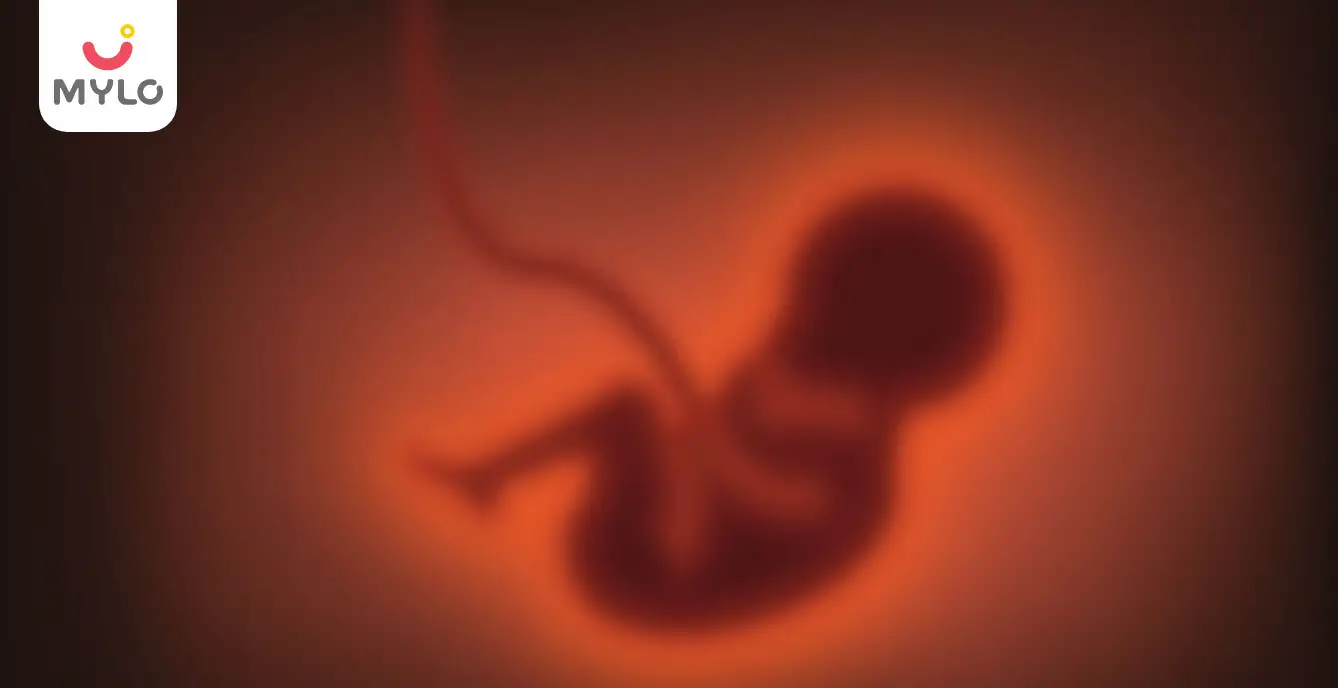Home

Vaginal Bleeding

Postmenopausal Bleeding: Symptoms, Causes & Treatment
In this Article

Vaginal Bleeding
Postmenopausal Bleeding: Symptoms, Causes & Treatment
Updated on 18 October 2023
A woman goes through many changes in her life, one of which is vaginal bleeding or periods. She endures periods for most of her life and thinks that once menopause hits, she will be free from that suffering. But is it possible for a woman to bleed even after menopause? Yes, this is called postmenopausal bleeding.
Postmenopausal bleeding is when a woman has vaginal bleeding for a year or more after her last period. It could mean that your reproductive system is changing, like if your vaginal lining is getting dry or if you have polyps or something else. After menopause, bleeding can indicate uterine cancer in roughly 10% of women.
What Is Postmenopausal Bleeding?
The term "postmenopausal bleeding" refers to menstrual bleeding after menopause. Menopause is the time in a woman's life (often beyond the age of 51) when her reproductive hormones begin to decline and her menstrual periods end. It's not usual for a woman to experience vaginal bleeding more than a year after her last menstruation. A person may experience spotting or excessive bleeding.
Most women who experience bleeding after menopause do so because of benign (noncancerous) gynecological disorders such as endometrial polyps. After menopause, bleeding can indicate uterine cancer in roughly 10% of women (endometrial cancer). The most prevalent reproductive cancer is uterine cancer which is more commonly found in women when compared to ovarian or cervical cancers. If you have any bleeding issues after menopause, consult your doctor.
You may also like: Cervical Cancer: Causes, Symptoms & Prevention
Symptoms Of Postmenopausal Bleeding
Some women experiencing postmenopausal bleeding may not show any other symptoms. Yet signs and symptoms of postmenopausal bleeding might be present. This may be dependent on the underlying reason of the bleeding.
Postmenopausal years are often associated with a decline in the severity of menopausal symptoms like hot flashes. Postmenopausal women may also experience a variety of other symptoms.
For women who have passed menopause, some possible symptoms are:
-
Vaginal dryness
-
Lessened sexual desire
-
Lack of Sleep
-
Stress
-
Increase in Urinary Tract Infections
-
Weight Gain
Causes Of Postmenopausal Bleeding
The most common causes of postmenopausal bleeding are:
1. Hormone Replacement Therapy
This therapy reduces a few menopausal symptoms through progesterone and estrogen supplements.
2. Endometrial or Uterine Cancer
Cancer that is present in the uterus lining.
3. Vaginal or Endometrial Atrophy
Thin and dry uterine or vaginal lining.
4. Uterine Polyps
This refers to the growth in the uterus.
5. Endometrial Hyperlapsia
The uterine lining becomes excessively thick and may incorporate abnormal cells.
Furthermore, there are other possible causes, such as:
-
Cancer of the cervix, often known as cervical cancer.
-
An infection or inflammation of the cervix or endometrium is known as cervical or endometritis, respectively.
-
External vulvar bleeding, bleeds from the bladder or rectum, or bleeds from the vulvar skin (outside near the vagina).
How To Diagnose Postmenopausal Bleeding?
The following can be used to determine what's causing the bleeding:
-
Your healthcare provider will examine your vagina and cervix.
-
Cervical cells can be screened with a Pap smear.
-
Vaginal ultrasound, which may involve the administration of saline to visualize uterine polyps better, is the standard method.
-
A uterine or endometrial biopsy involves your doctor sliding a thin, straw-like tube into your uterus to collect cells to test for abnormalities. This is done at work and can lead to muscle cramps.
Prevention For Postmenopausal Bleeding
Bleeding after menopause could be caused by something minor, such as an enlarged uterus, or something more serious, like malignancy. You may not be able to stop irregular vaginal bleeding, but you can act immediately to acquire a diagnosis and start treatment for whatever is causing it. Early detection increases the likelihood of a successful treatment plan. Reducing your vulnerability to conditions that could lead to irregular postmenopausal bleeding is the most effective way to avoid this complication.
Treatment For Postmenopausal Bleeding
The causes of postmenopausal bleeding are the factors that decide its treatment. The most common treatment of postmenopausal bleeding is either surgery or medication.
The medications include:
1. Antibiotics
Antibiotics have the power to treat most cervix or uterus-related infections.
2. Estrogen
Vaginal creams, rings, and insertable tablets are all viable delivery mechanisms for estrogen. Pills and patches both exist for administering estrogen treatment systemically. When estrogen is administered in a therapy that is considered systemic, it is distributed all over the patient's body.
3. Progestin
Progestin is progesterone’s synthetic form. When used to induce uterine lining loss, it effectively treats endometrial hyperplasia. Progestin can be administered in several forms, including oral pills, injectables, topical creams, and intrauterine devices (IUD).
You may also like: Myomectomy: A Comprehensive Guide to Uterine Fibroid Removal Surgery
Surgeries include
1. Hysteroscopy
It's a technique when a camera is used to look at your cervix and uterus. To treat bleeding caused by polyps or other abnormal growths, your doctor will introduce a hysteroscope (a thin, lighted tube) into your vagina. In-office diagnostic is possible. Hysteroscopy, which is used to examine the uterus and remove tumors, is often performed under general anesthesia in a hospital operating room.
2. Dilation and curettage (D&C)
The uterine lining and its contents can be sampled with this method. A hysteroscopy may be used in conjunction with a D&C by your doctor. Some cases of endometrial hyperplasia respond well to a dilation and curettage procedure.
3. Hysterectomy
The cervix and uterus will be surgically removed. If you've been diagnosed with uterine cancer, your doctor may recommend a hysterectomy. Learn about the many surgical options for removing your uterus from your doctor. During minimally invasive operations, just tiny incisions are made (incisions).
Conclusion
In the years before menopause, it is common for women to have irregular vaginal bleeding or postmenopausal bleeding. You should contact a doctor if you're still bleeding a year after your previous period.
References
1. Munro MG (2014). Southern California Permanente Medical Group’s Abnormal Uterine Bleeding Working Group. Investigation of women with postmenopausal uterine bleeding: clinical practice recommendations.
2. Sung S, Abramovitz A. (2022). Postmenopausal Bleeding.
3. Gale A, Dey P. (2009). Postmenopausal bleeding. Menopause Int.



Written by
Sanju Rathi
A Postgraduate in English Literature and a professional diploma holder in Interior Design and Display, Sanju started her career as English TGT. Always interested in writing, shetook to freelance writing to pursue her passion side by side. As a content specialist, She is actively producing and providing content in every possible niche.
Read MoreGet baby's diet chart, and growth tips

Related Articles
Related Questions
Hello frnds..still no pain...doctor said head fix nhi hua hai..bt vagina me pain hai aur back pain bhi... anyone having same issues??

Kon kon c chije aisi hai jo pregnancy mei gas acidity jalan karti hain... Koi btayega plz bcz mujhe aksar khane ke baad hi samagh aata hai ki is chij se gas acidity jalan ho gyi hai. Please share your knowledge

I am 13 week pregnancy. Anyone having Storione-xt tablet. It better to have morning or night ???

Hlo to be moms....i hv a query...in my 9.5 wk i feel body joint pain like in ankle, knee, wrist, shoulder, toes....pain intensity is high...i cnt sleep....what should i do pls help....cn i cosult my doc.

Influenza and boostrix injection kisiko laga hai kya 8 month pregnancy me and q lagta hai ye plz reply me

RECENTLY PUBLISHED ARTICLES
our most recent articles

Hormones
Hormone Replacement Therapy (HRT) : Type, Side Effects & Treatment

Medications
Dolo 650 During Breastfeeding: Expert Advice and Guidelines for Nursing Mothers

Ayurveda & Homeopathy
Arogyavardhini Vati: How This Herbal Blend Can Help You Balance Your Three Doshas

Hygiene & Sanitation
How to Clean Your Vagina & Vulva Complete Guide

Miscarriage
Blighted Ovum: Causes, Symptoms & Treatment

Folic Acid
The Ultimate Guide to Consuming Iron and Folic Acid Tablets
- White Creamy Discharge: Is It Normal or a Cause for Concern?
- First-Time Sex & Pregnancy Chances: What You Need to Know
- The Ultimate Guide to Twin Pregnancy Symptoms at 4 Weeks
- A Comprehensive Guide to Understanding the Effects of Masturbation
- Placenta Position: How It Affects Your Pregnancy and Delivery
- Clitoral Hood: Benefits, Risks & More
- Pelvic Exam: Details, Outcomes & Dos & Don'ts
- My life mantar is - HARE KRISHNA HARE KRISHNA KRISHNA KRISHNA HARE HARE HARE RANA HARE RAMA RAMA RAMA HARE HARE which means no matter what is going in your lifejust keep this mwntra in your mind every minute every sec everything will be good automatically. U will not need any other mantra
- Early Pregnancy & Egg White Discharge: What You Need to Know
- Dilation and Curettage (D&C): Procedure, Risks & Benefits
- Alivher Tablet Uses: How to Maximize the Benefits for Your Reproductive Health
- Incompetent cervix: Causes, Symptoms, & Treatment
- Soda During Pregnancy: Is It Safe or Should You Avoid It?
- Watery Discharge Before Period: Is It Normal or a Cause for Concern


AWARDS AND RECOGNITION

Mylo wins Forbes D2C Disruptor award

Mylo wins The Economic Times Promising Brands 2022
AS SEEN IN
















- Mylo Care: Effective and science-backed personal care and wellness solutions for a joyful you.
- Mylo Baby: Science-backed, gentle and effective personal care & hygiene range for your little one.
- Mylo Community: Trusted and empathetic community of 10mn+ parents and experts.
Product Categories
baby carrier | baby soap | baby wipes | stretch marks cream | baby cream | baby shampoo | baby massage oil | baby hair oil | stretch marks oil | baby body wash | baby powder | baby lotion | diaper rash cream | newborn diapers | teether | baby kajal | baby diapers | cloth diapers |








